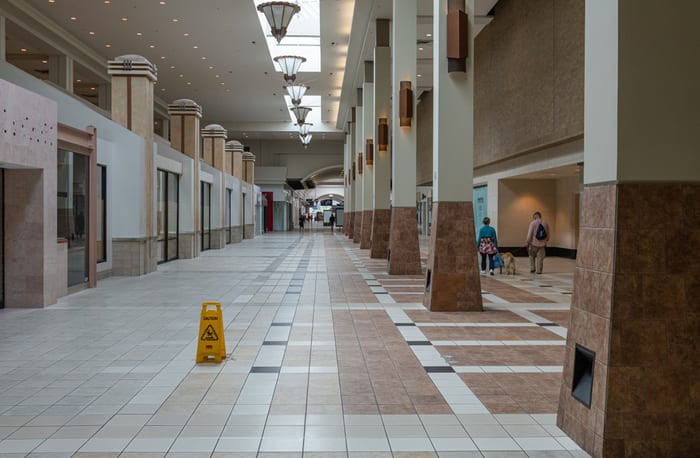Mall Vacancy Rate Reaches 20-Year High

U.S. shopping malls have reached the pinnacle of struggle, with empty shops hitting a 20-year high, the Financial Times (FT) reported on Tuesday (Jan. 7).
By the end of 2019, there were more vacant stores than at any time during the past two recessions, according to Reis Moody’s Analytics.
People are shopping and spending is strong, but eCommerce is getting most of the sales rather than physical stores. Malls are anticipating that more shops will shutter in the coming months. Texas-based Pier One Imports is the latest casualty, with 450 stores going out of business. Gap and Victoria’s Secret also announced closure plans.
Although earlier reports of a retail apocalypse were overstated at first, the latest statistics seem to indicate “that the scales may have tipped,” said Barbara Denham, senior economist at Reis.
Reis pegged the mall vacancy rate at an all-time high of 9.7 percent, the most since recordkeeping started in 2000 when just 5.3 percent of shops were empty. Vacancies increased to 6.8 percent with the 2001 recession and hit 9.4 percent in 2011 following the 2008 financial crisis.
The average rent of $43.53 per square foot is a record high, Reis data showed. The data also indicated that geography plays a role in store closings, with fourth-quarter vacancy rates of 4.2 percent in San Francisco and 16.3 percent in Indianapolis.
Data from Coresight shows that 9,300 stores shuttered in 2019, the most since 2012, the first year the information was tracked.
Overall retail sales from Nov. 1 to Dec. 24 were up 3.4 percent from the same period in 2018, Mastercard data indicated, but sales at brick-and-mortar stores went up only 1.2 percent.
As traditional mall merchants go under, however, some online brands are expanding into brick-and-mortar locations. More than 1,700 physical stores in the U.S. were digital merchants first, according to Fifth Wall and Thinknum Alternative Data.
An April, a UBS report showed that online shopping by the average U.S. household went up almost 50 percent from five years earlier. The report also noted that online shopping is expected to make up 25 percent of retail sales, with around 16 percent of overall sales made online.